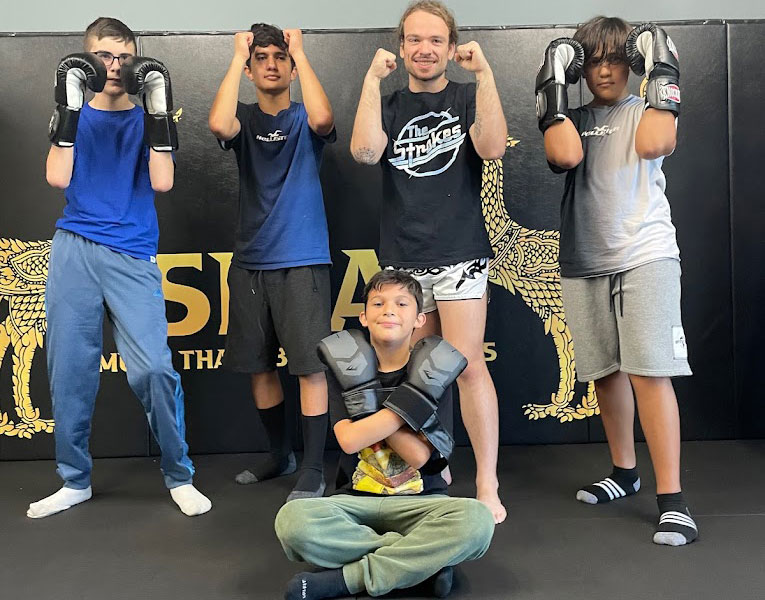Martial arts have a rich tapestry, woven with various disciplines that captivate enthusiasts worldwide. Among the myriad of fighting styles, kickboxing, and Muay Thai often find themselves entwined in the same conversation. While they may share certain characteristics, a closer inspection reveals distinctive nuances that set them apart as unique forms of self-defense and sport.
Understanding the Basics
Kickboxing: The Art of Eight Limbs
Kickboxing originated in the mid-20th century as a fusion of traditional karate and Western boxing. With its roots in Japan and later popularized in the United States, kickboxing emphasizes punches and kicks. The practitioner, known as a kickboxer, utilizes a combination of hand and foot techniques to strike opponents. The rules vary, but commonly include the prohibition of knee strikes and elbow strikes.
Muay Thai: The Art of Eight Limbs Redefined
Muay Thai, on the other hand, hails from Thailand and is often referred to as the “Art of Eight Limbs.” This name arises from its unique incorporation of fists, elbows, knees, and shins. Unlike kickboxing, Muay Thai permits the use of clinch fighting, enabling practitioners to control and strike their opponents with devastating knee and elbow strikes. The sport holds deep cultural significance in Thailand, with rituals and ceremonies accompanying matches.
Distinguishing Techniques
Kicks and Strikes
In kickboxing, kicks are executed with precision and speed, focusing on the lower body. The emphasis lies on high and low kicks, executed with the intent to score points or incapacitate opponents. Punches, particularly jabs and crosses, play a vital role in kickboxing strategy.
Muay Thai, true to its name, broadens the range of strikes. Elbows and knees come into play, allowing for close quarters combat in the clinch. This diversity in striking techniques makes Muay Thai a more comprehensive martial art in terms of offensive capabilities.
Clinch and Grappling
The clinch is a pivotal aspect that distinguishes Muay Thai from kickboxing. Muay Thai practitioners excel in this range, using it not only for defensive purposes but also as an avenue for powerful strikes. Elbow and knee strikes can be devastating when delivered from the clinch, making it a crucial skill for any Muay Thai enthusiast.
In kickboxing, the rules often restrict excessive clinching or grappling. While close-quarters techniques may be employed, the depth of clinch fighting seen in Muay Thai is absent in traditional kickboxing.
Training Philosophy
Kickboxing: Precision and Speed
Kickboxing training places a strong emphasis on speed and precision. Practitioners focus on developing quick reflexes and mastering the art of combination strikes. Footwork and agility are key components, enabling kickboxers to evade attacks and swiftly counter with well-timed kicks and punches.
Muay Thai: Strength and Endurance
Muay Thai training, while also valuing speed and precision, places additional emphasis on strength and endurance. The demands of incorporating elbows and knees into strikes require a robust physique. Conditioning drills often include extensive use of the heavy bag, clinch work, and sparring sessions to build the stamina necessary for the rigors of Muay Thai competition.
Cultural Context
Kickboxing: A Global Phenomenon
Kickboxing has evolved into a global phenomenon with various styles, rulesets, and competitions around the world. Its widespread appeal transcends cultural boundaries, attracting practitioners from diverse backgrounds. The lack of rigid cultural traditions makes kickboxing accessible to a broad audience.
Muay Thai: Cultural Heritage
Muay Thai, deeply rooted in Thai culture, incorporates traditional rituals and ceremonies. The “Wai Kru” dance, performed before a match, pays homage to teachers and ancestors. This cultural context adds a layer of richness to Muay Thai, making it not just a sport but a way of life for many in Thailand.
Conclusion:
In the kaleidoscope of martial arts, kickboxing and Muay Thai emerge as vibrant threads, each weaving its own story of technique, tradition, and triumph. The distinctions between these disciplines are not boundaries but rather bridges that connect enthusiasts to a world of endless possibilities.
As practitioners lace up their gloves or don their traditional Muay Thai shorts, they become part of a legacy that spans continents and centuries. Kickboxing’s adaptability and global reach complement Muay Thai’s unwavering commitment to tradition, creating a harmonious synergy within the broader realm of martial arts.
The decision to pursue kickboxing or Muay Thai is a personal journey, a declaration of individuality within the collective pursuit of mastery. The ring becomes a canvas where the strokes of a kickboxer’s precision and a Muay Thai artist’s versatility coalesce, painting a picture of diversity and unity.
In this conclusion, let us embrace the essence of both disciplines, recognizing that the beauty of martial arts lies not just in their differences but in the shared pursuit of discipline, respect, and self-improvement. Whether one finds solace in the rhythm of a kickboxing combination or the poetry of a Muay Thai clinch, the journey is a testament to the vast tapestry that is martial arts.
As the echoes of kicks and strikes reverberate in gyms and stadiums worldwide, let us celebrate the richness of kickboxing and Muay Thai. These disciplines stand not as rivals but as companions on the path of self-discovery, inviting all who dare to step onto the mat to become part of a story that transcends borders, cultures, and generations. In the end, it’s not about choosing between kickboxing and Muay Thai; it’s about choosing a path that resonates with the spirit within, and in that choice, finding a community that shares the same passion for the art of combat and the art of living.

